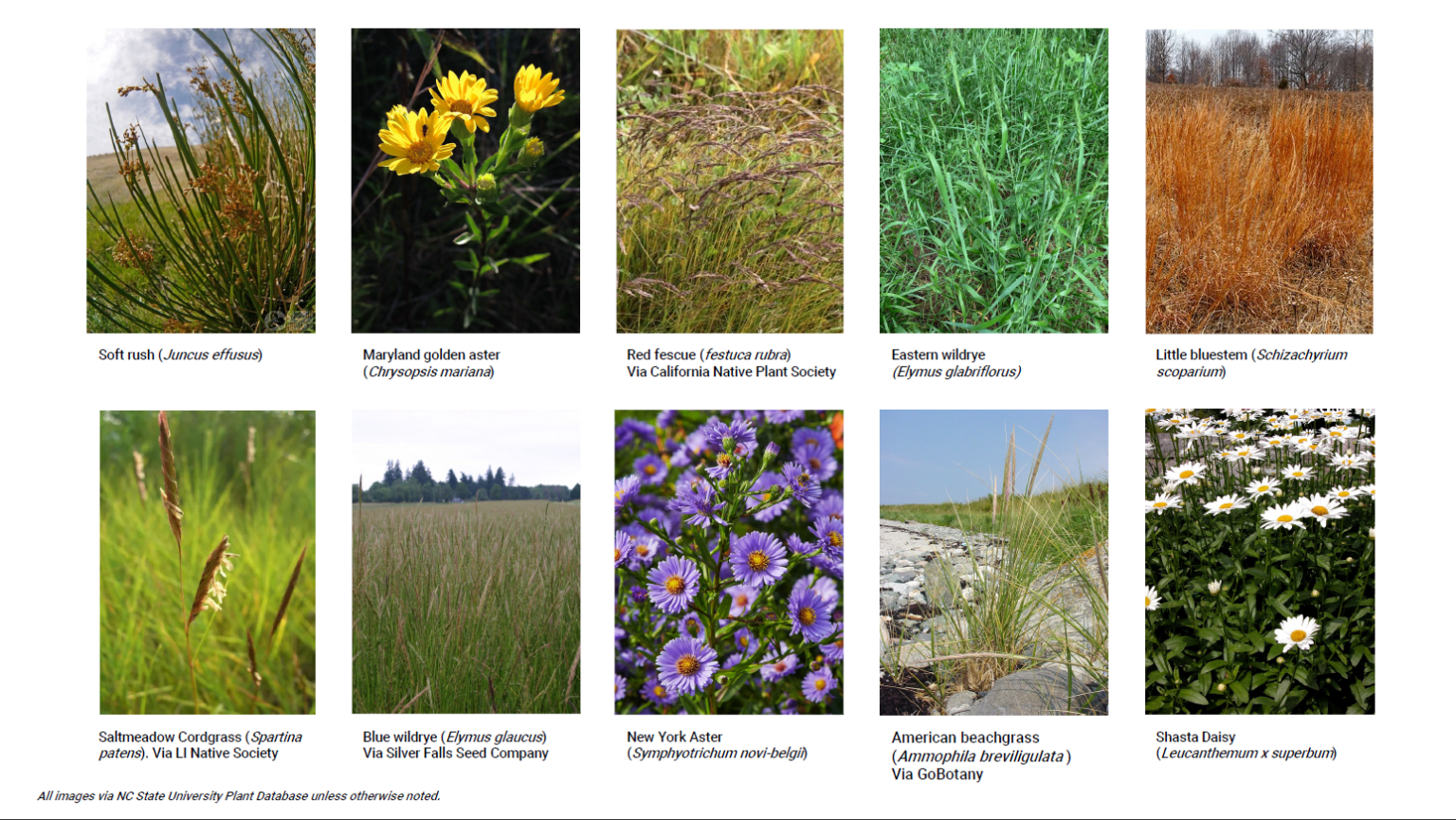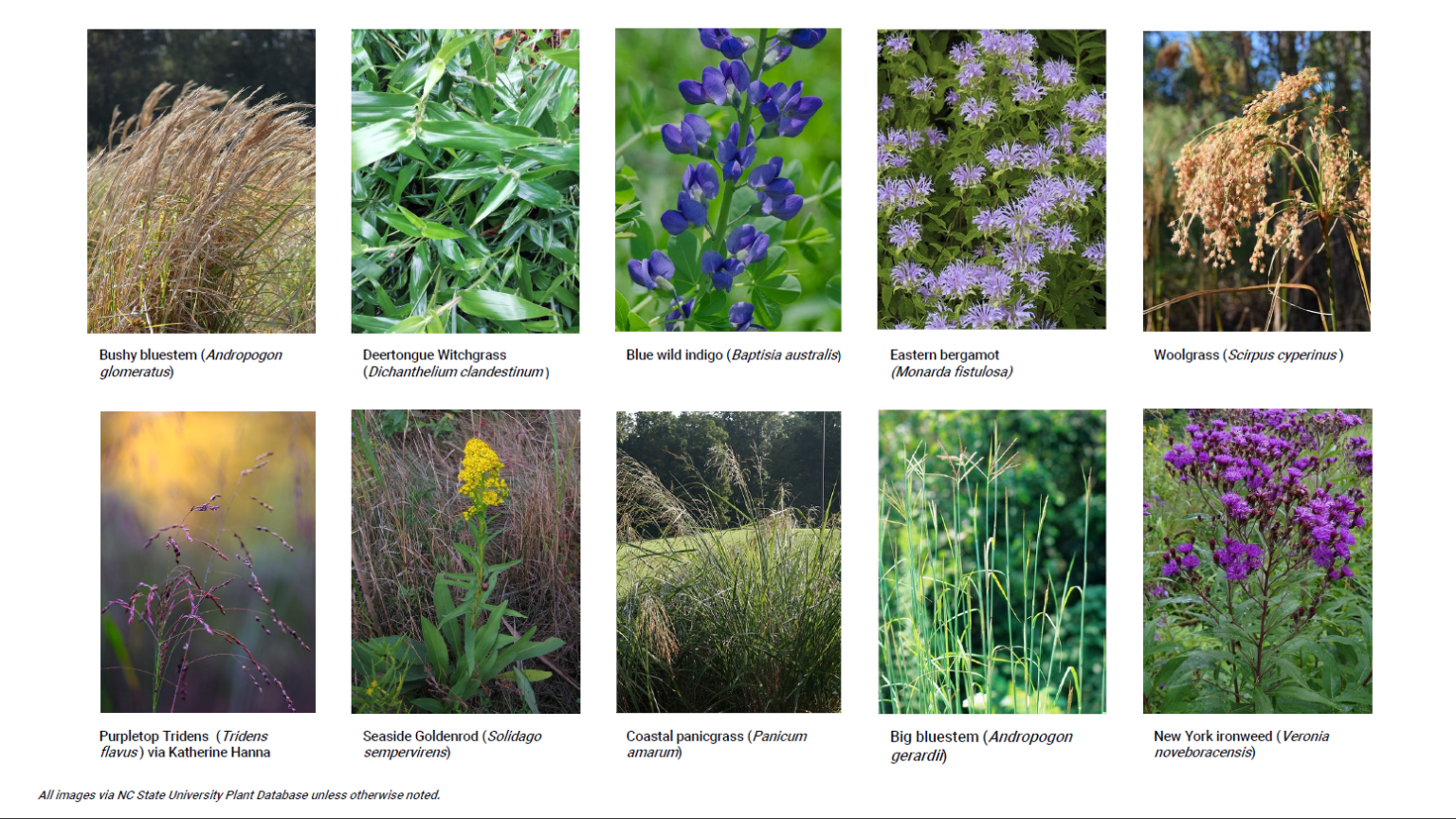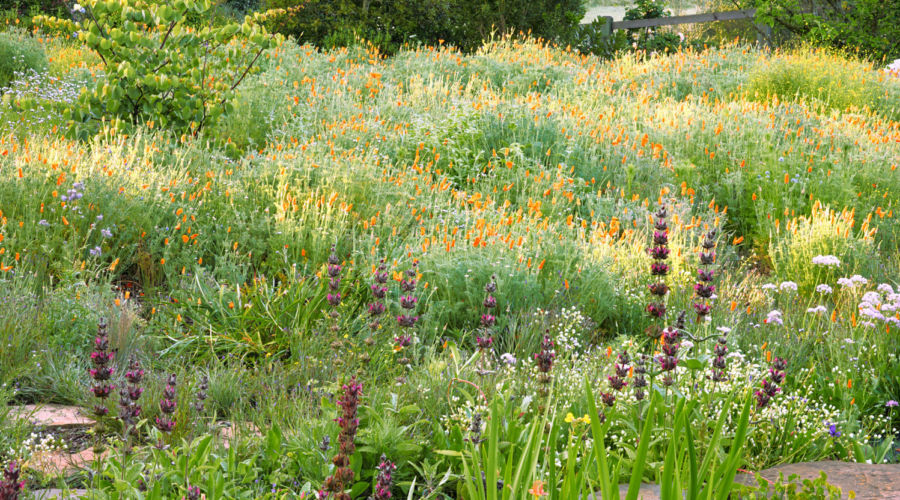Planted Meadow Design
Long Island Planted Meadow Design
Residential lawns, despite seeming innocuous, are one of the largest contributors to environmental damage in the West. According to landscape architect Owen Wormser in the 2020 novel which inspired this project, Lawns into Meadows: Growing a Regenerative Landscape, the average gas-powered lawnmower creates more carbon dioxide pollution in a single hour (maybe half of your weekend mowing session) than a car using an entire tank of gas. Factoring in the effects of fertilizer and other upkeep on the groundwater and local wildlife, the way that continuous maintenance weakens both the soil and the grass itself, and carcinogenic properties of many of the commonly used lawn treatments such as gylphosate, lawns overall are a serious issue worthy of our consideration as architects. And this is not to mention all of the social and cultural implications of “lawn culture”.
This project is a hypothetical proposal for transforming a typical lawn on eastern Long Island, New York, into a planted meadow which uses native plants, aimed at rehabilitating the soil with phyto-remedial techniques.



The preparation for this design included some site analysis and precedent study. Thankfully, I know this area well and had the chance to go out and study it during my time working on this project so I was able to get a good understanding of the needs of the site and the types of plants that would thrive here. This region is characterized by having tall, rocky-cliffs in the north and west that give way to low-lying, flood prone land, and being very densely populated with a strongly entrenched culture of well-kept lawns. The soil here is slightly acidic, moist, and well-drained. According to the Long Island Pocket Guide for Landscape Soil Health from Cornell University, the soil association for the area is made up of soil types known as Carver coarse sand, Plymouth loamy sand and Riverhead sandy loam. The average temperature ranges from below freezing in the winter to just above 80°F in the summer, and the island’s cold hardiness zone is 7. Due to Long Island’s coastal location and generally more temperate climate than the rest of the northeast, it is considered a transition zone where both cool and warm-season grasses thrive, although cool-season is preferred. The meadow planting is assumed to be in the backyard of a fairly large, flat property, which allows for more height variation than a front yard.
Given these conditions, the plants chosen are tolerant of poor soil conditions, adaptable to temperature changes, high moisture and precipitation, and useful for the existing wildlife which includes deer, gulls, wild turkeys, and butterflies. Many of these plants, such as the eastern bergamot (Monarda fistulosa) and the woolgrass (Scirpus cyperinus) provide larval hosting for migrating butterfly species and food for the declining bee population. Also, a few of these plants perform ecological services including nitrogen fixation in order to heal the soil which has been battered by a century of urban sprawl and harmful lawn treatments. Inspiration is taken from local beaches and parks such as Cupsogue County Park in Westhampton and Cedar Beach Nature Preserve in Mt. Sinai as well as existing planted meadows such as the Theodore Roosevelt Audubon Center in Oyster Bay. In order to preserve local identity and visually tie the garden to its surroundings all of the plants are native to the area except for one, the Shasta Daisy (Leucanthemum x superbum), although it is a common foreign plant already used in the area. The plants are divided into three main layers, as a high layer with many of the most vibrant and attractive plants, a low layer that is more subdued but still visually interesting and whose bloom times complement those of the high layer, and a groundcover that keeps a consistent backdrop for the project.
See my data, sources, and other information in the spreadsheet below:
Powered By EmbedPress
